By John C. Harris
May 2014
For the second year, Chesapeake Light Craft and Florida-based WaterTribe teamed up to offer expedition-style small boat racing on Maryland's scenic Eastern Shore.
Near-death scrapes. Daring rescues. Abandoned boats. Desperate escapes. Dismastings, broken limbs, scurvy. None of these things happened during this year's two Chesapeake WaterTribe races, the OkoumeFest Ultra Marathon and the OkoumeFest Challenge. What DID happen was a lot of great small boat seamanship, a lot of calorie burning, and a lot of fast paddling and sailing through some of the most beautifully preserved shorelines of Maryland's rural Eastern Shore.
Florida-based WaterTribe has been around since 2001, when "Chief" Steve Isaac initiated the first small boat race from St. Pete to Key Largo, now famous right the world round as the Everglades Challenge. WaterTribe's slate of events has grown to include point-to-point races around the country, ranging from two days to multiple weeks in length.
WaterTribe racing, which has its roots in the popular European "Raid" scene, is expressly for smallcraft: boats propelled by paddles, oars, or sail. (And some that do all three.) The race courses impose challenging "filters" on the boats and competitors. There are always long stretches of ankle-deep water, and there are always low bridges. Those two filters, for example, make it difficult to compete in high-performance sailboats with deep foils and tall masts. Races that feature light wind will be won by fast kayaks; if it's blowing hard the quicker sailboats will make up more in open water than they lose while traversing shoals or scraping under bridges. If it's a mixture of weather, the results are absolutely unpredictable. It's a surpassing challenge for boat designers, as the best boats are the ones that feature the smartest compromises.
But more than anything, it's a test of the crews, who need to be in excellent physical shape, able to endure 25-hour stretches without sleep, and above all know how to handle their boats in all conditions.
This year's two races, the 65-mile OkoumeFest Ultra Marathon and the 210-mile OkoumeFest Challenge, presented the competitors with just about every scenario from small craft warnings to flat calms. The racers, who according to WaterTribe custom adopt "tribal" names ("SharkBait," "DancesWithWaves," "DeepMinnow," "SharkBait"), shoved off on Sunday morning, May 18th, just after dawn.
Find the official results here. Find full details on WaterTribe events here.
The Ultra Marathon comprises a loop of roughly 65 miles, encircling Kent Island, Eastern Neck Island, and Wye Island.
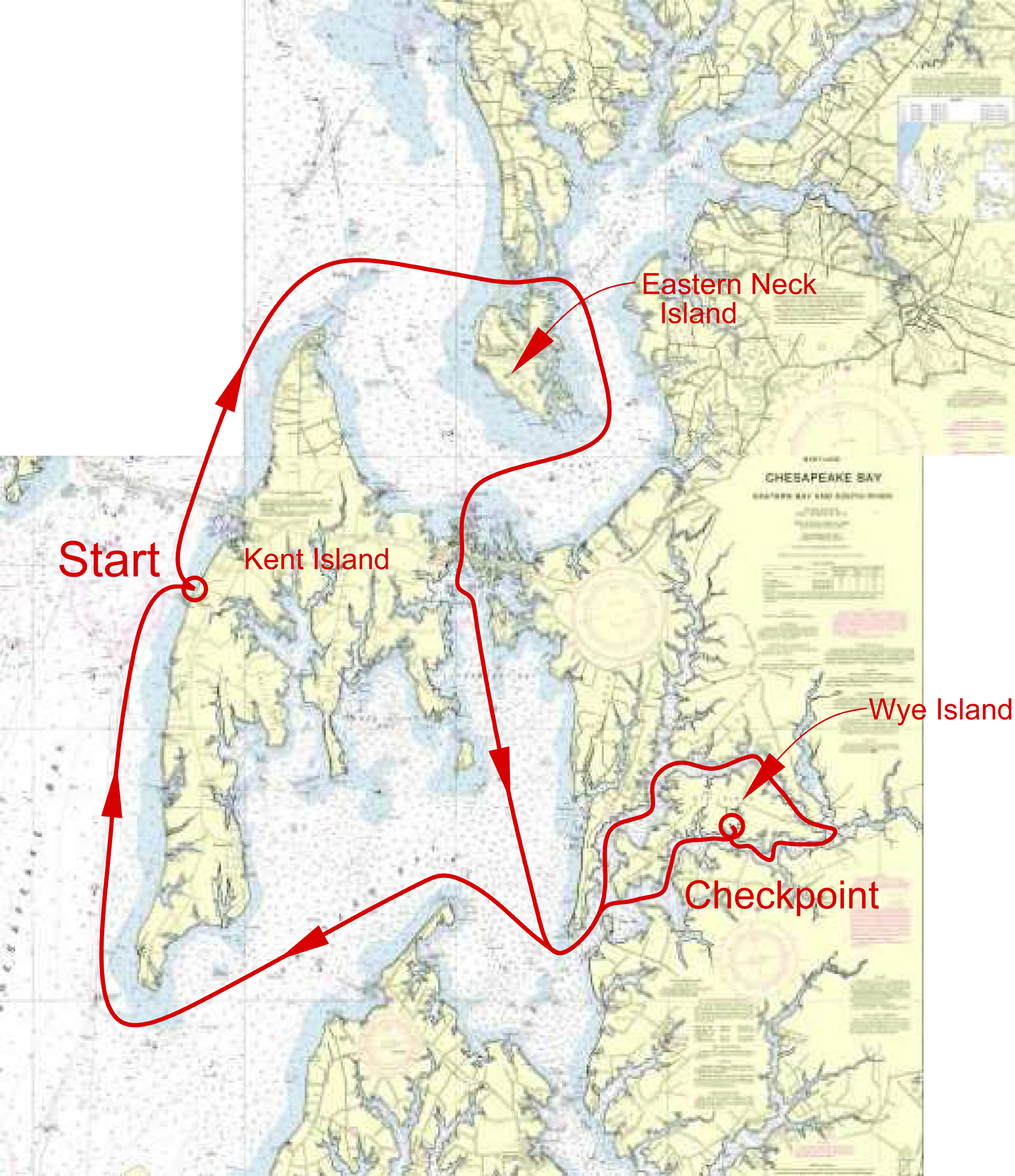
Departing at the same time were the OkoumeFest Challenge racers, who take in most of the Ultra Marathon course, but add a very long loop south to Tangier Sound and back, for a total of 210 miles, give or take:
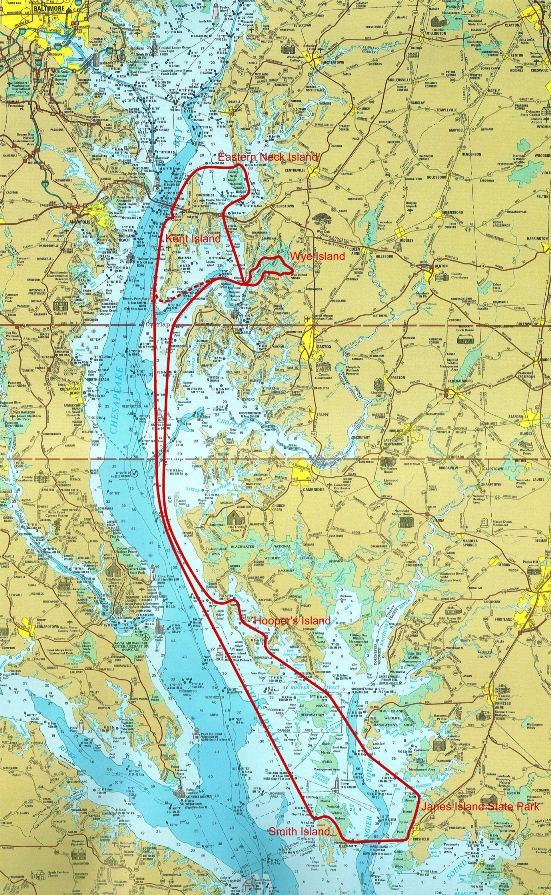
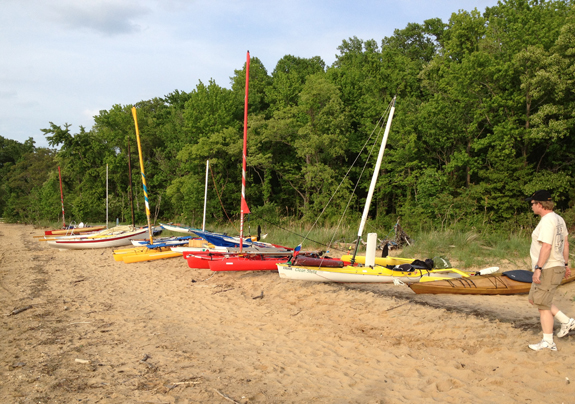
Most of the 18 competitors lined up on the beach at Matapeake State Park before the start.
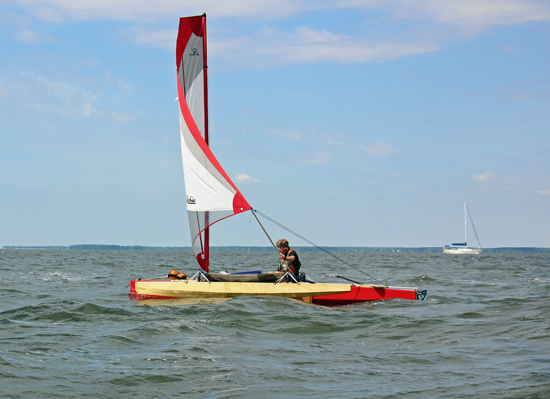
Roger Mann (JollyRoger) built this 18'4" trimaran from plans by Klaus Metz, and fitted it out with the rig and Mirage Drive unit from a Hobie trimaran. The combination of a fast sailing hull and the Mirage Drive was simply unbeatable; he established a huge lead from the start and finished the 210-mile Challenge course in an amazing 47 hours, for line honors and first in Class 5. He didn't sleep much but by all accounts finished the race healthy, happy, and ready for more.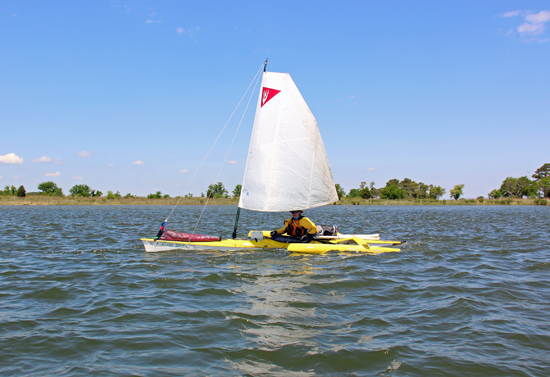
Jeff Prideaux (CleanSlate) raced this 18-foot Triak in the 210-mile Challenge and finished in 4 days, 14 hours.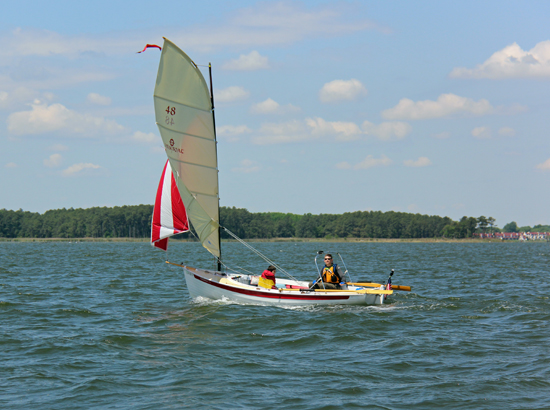
The father-and-son team of Philip and Aiden McLean (Badger and Corsair) were back for their second 65-mile Ultra Marathon, finishing without incident in 16-1/2 hours. That means they were doing better than four knots when they were in motion in their Norseboat 17.5---excellent for a small boat like this.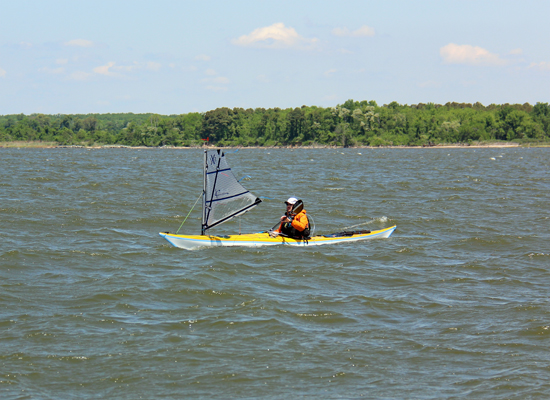
Blustery conditions on the Chester River near Eastern Neck Island were a challenge to the paddlers, many of whom set auxiliary sails.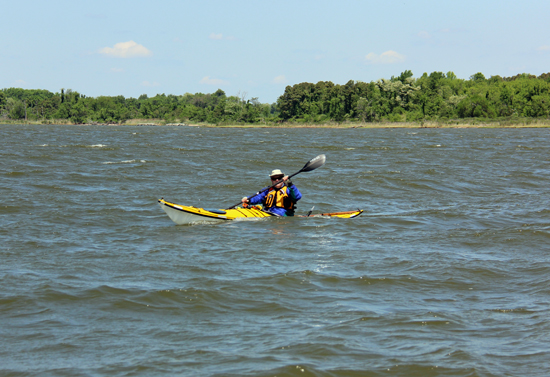
Andy Kallgren (DeepMinnow) in a Valley Argonaut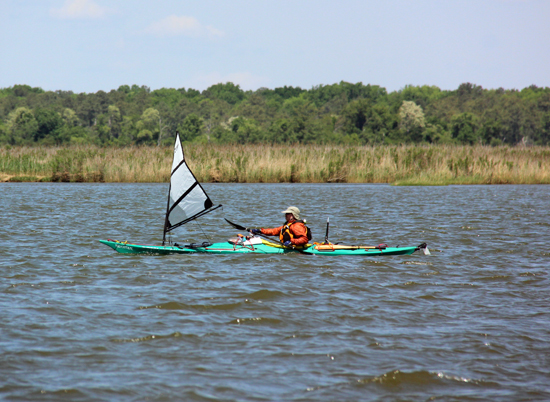
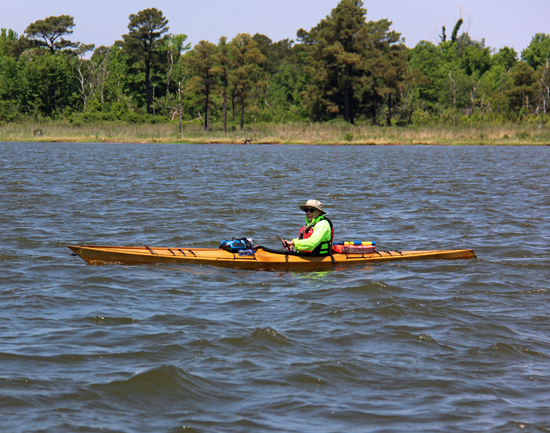
Tom Berlin (HighAndDryWV) in a Pygmy Coho, near Eastern Neck Island.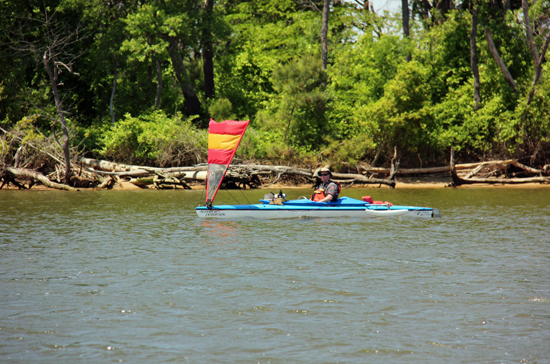
Wayne Cannon (SharkBait) in a Superior Expedition decked canoe.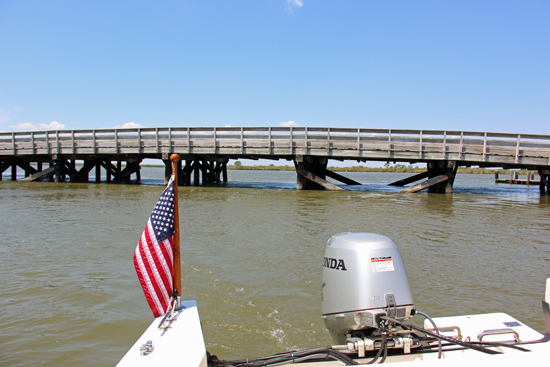
The low bridge at Eastern Neck Island, at high tide, posed particular challenges to the sailboats this year.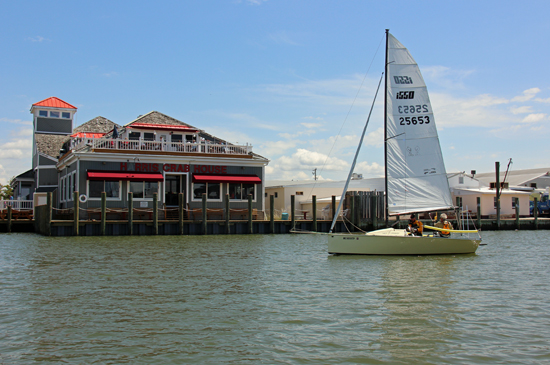
This I550, built at WEST System for the Gougeon Brothers, Meade and Jan, was sailed in the OkoumeFest Challenge by Fred Bickley and Joseph Frohock. Even with a tabernacle mast, they had to wait an hour for the tide to drop so they could squeeze under the bridge at Eastern Neck Island. They're seen here awaiting the bridge opening at Kent Narrows.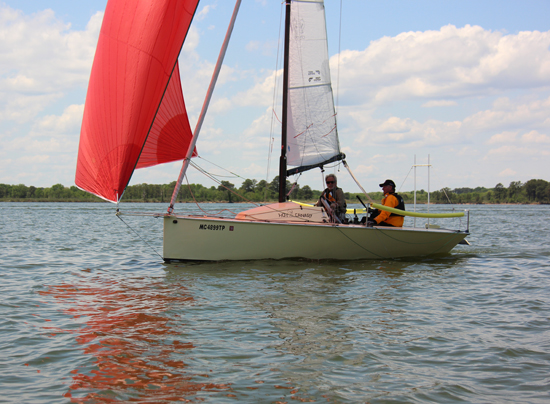
Once in open water, the I550 had serious legs if there was any wind at all. They finished the long course in 2 days, 23 hours.
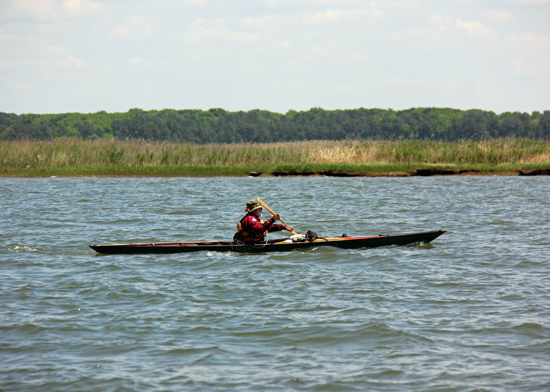
Ben Fuller raced in this stock CLC North Bay kayak, a narrow 18-footer that we sold in the late '90s and early 00's. As the first homebuilt boat to finish the Ultra Marathon, he wins the Homebuilt Boat Award, presented by CLC. That's two years in a row for CLC boats...who will take it next year?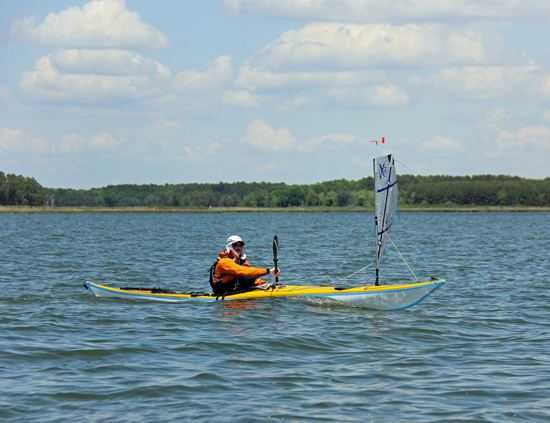
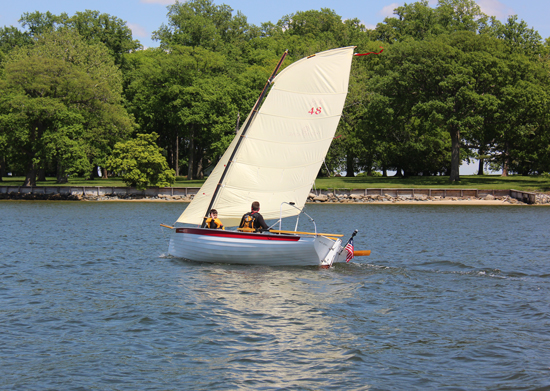
The Norseboat tacks up the Wye River.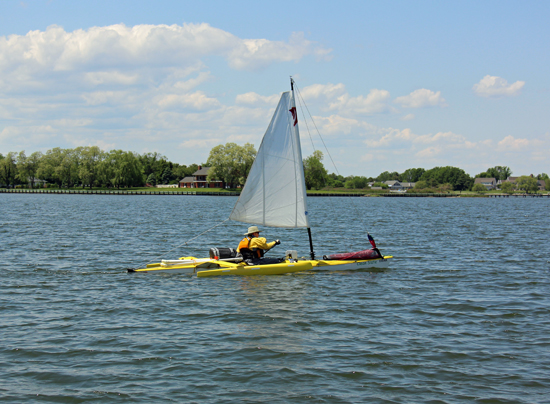
Triak on the Wye River, Bennett Point in the background.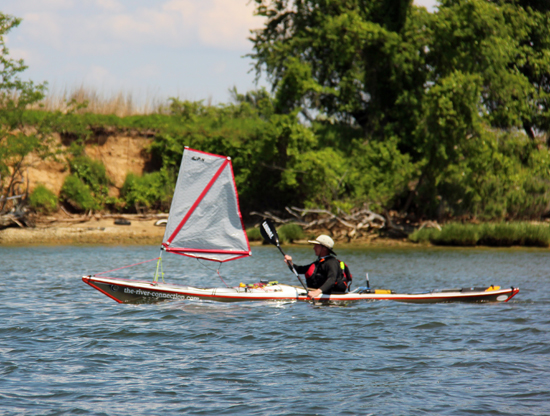
Marshall Seddon (SeaDawg) paddled this nice P&H Cetus with auxiliary sail to first place in Class 1 in the UltraMarathon, finishing in 17 hours 13 minutes. He's seen here with Wye Island to starboard.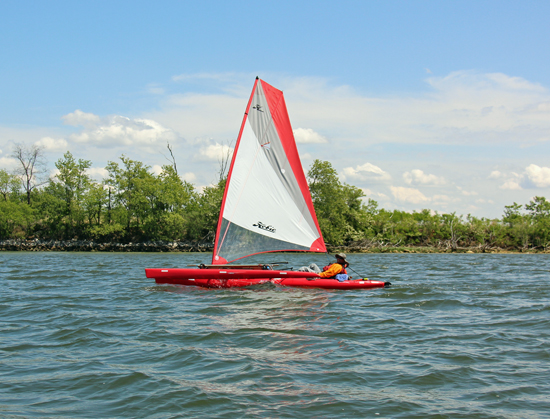
One of two Hobie Tandem Island trimarans in the 210-mile Challenge course, this tri was soloed by Royd Whedon (DancesWithWaves) and finished in 4 days 17 hours.
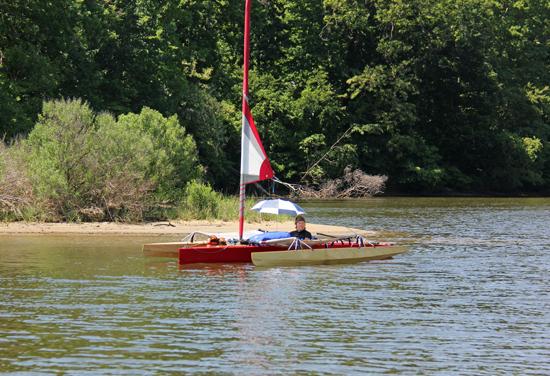
Here's Roger Mann in his trimaran, taking a short break at the first checkpoint on Wye Island.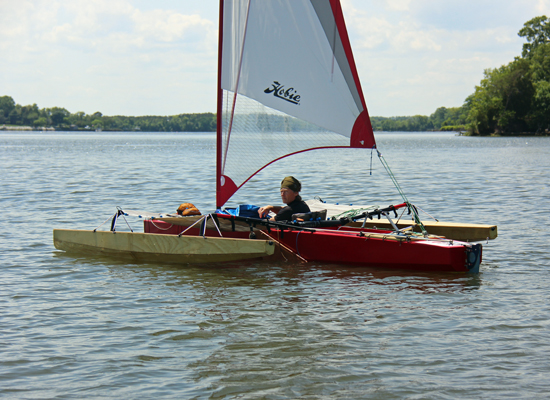
He vanished quickly downriver on his way to the big win.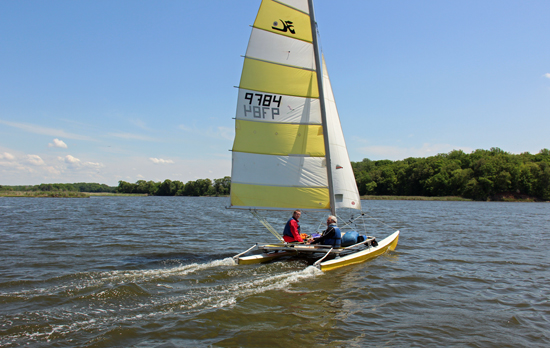
This is the second year for the Lammerees, father and son (LammerusPrime and LammerusMaximus), once again sailing a Hobie 16. They were the first to finish in the 65-mile loop.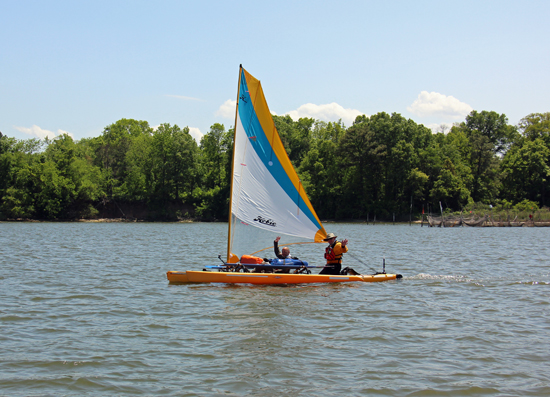
A crew of two (PrivateHam and SwampThing) sailed this Hobie TI around the long course in 3 days, 3 hours, and 42 minutes.
A big thanks to Steve Isaac and Bill McIntyre for all of the organizational work and race management.


 return to section:
return to section: 










